When working in a requirement model, you sometimes want to add a remark or pose a question. In this entry we will explain how to use the comments feature for that purpose.
Making comments
Making comments can be done at two levels:
(1) For the object as whole: this can be done in the comments table that can be found at the top of each detail view. You can add comments by clicking on the Add comment button.
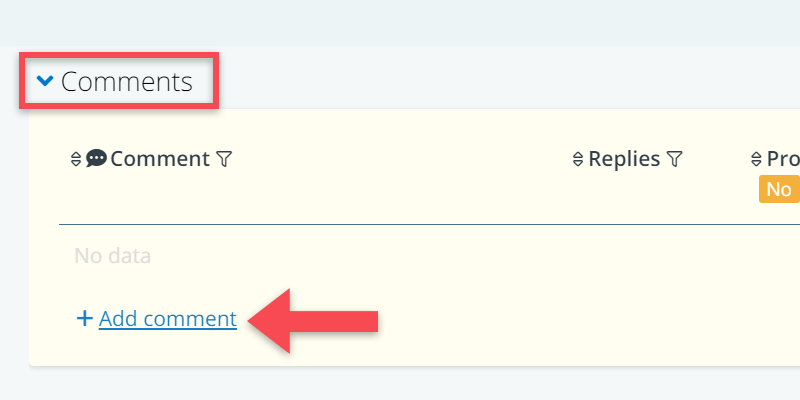
(2) For individual properties/relations: this can be done via the comment icon behind each property/relation.
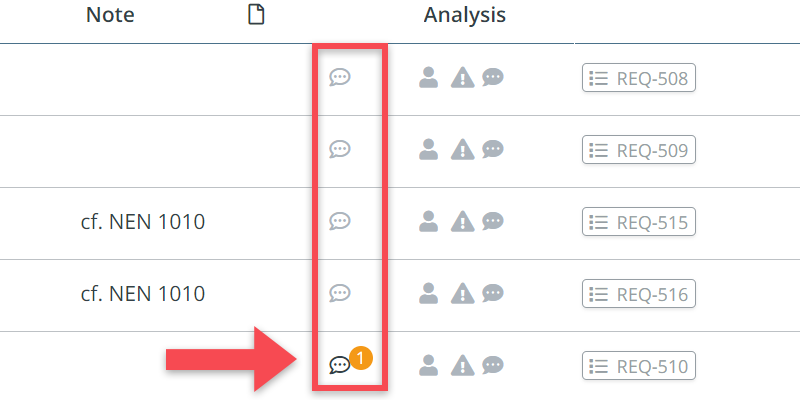
NB If you create a comment there, it will also be shown in the comments table at the top of the detail view.
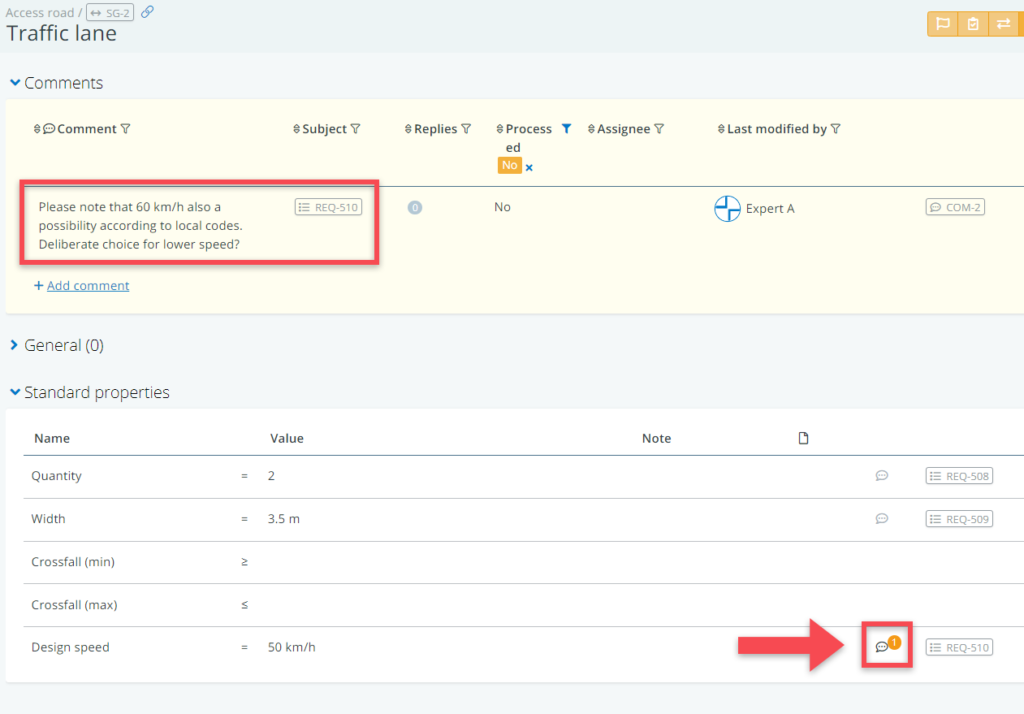
Referring to objects and requirements
In your comment, you may want to refer to specific requirements or objects elsewhere in the model. If you use requirement numbers (e.g. REQ-2) and object ID’s (e.g. SE-63) for this purpose, these automatically become clickable links.

Assigning comments
When placing a comment, you can assign a comment to a specific person by clicking on Addressee. A drop-down pick-list will open up showing you all the registered users with access to this model, plus all the roles and organisations that are relevant to the project. Pick the one that you want to pose this question or comment to.
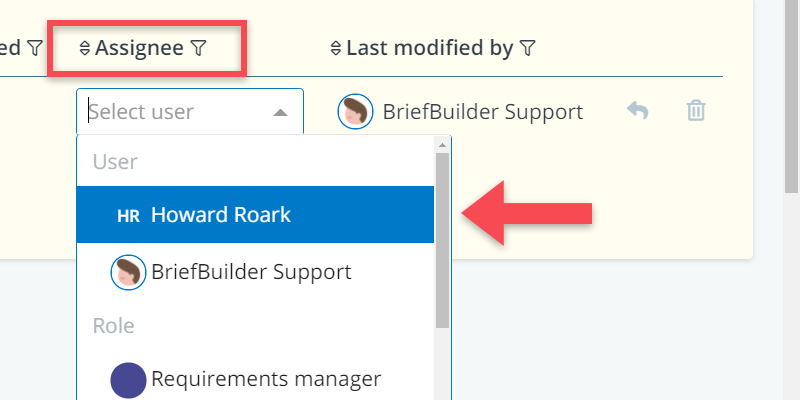
Replying to comments
To respond on a comment, you have to click on the icon, after which you can type in your reply.

Note that the number of replies is indicated in the Replies column.

Processing requirements
If the person who has created the comment is satisfied with the assignee’s answer (or if it has been solved in another way), the comment can be put on processed.
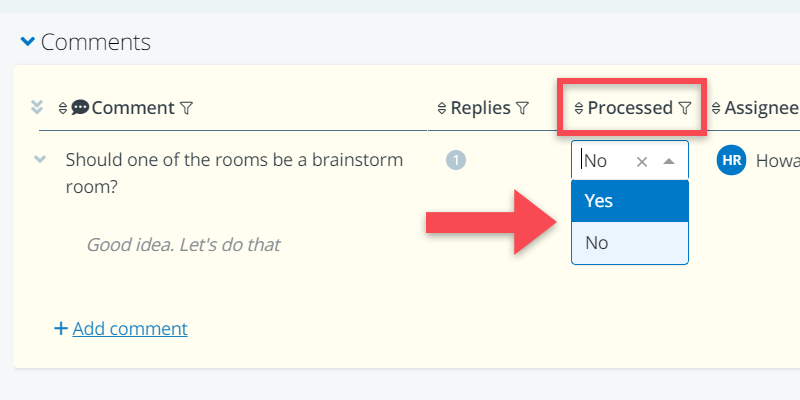
Comments that are processed can still be found in the comments overview, but they are not shown on the detail views anymore (unless you change the default filter setting for the comments table, by clicking on the x icon).
The alternative is to delete the comment (by clicking on the icon). Please note that when deleting a comment, they are really gone.
Comments assigned to you
Comments that are assigned to you (or to your role or you organisation), and that are not yet processed, can be found at the bottom of the project homepage, which is the page that you get to see when accessing the model.
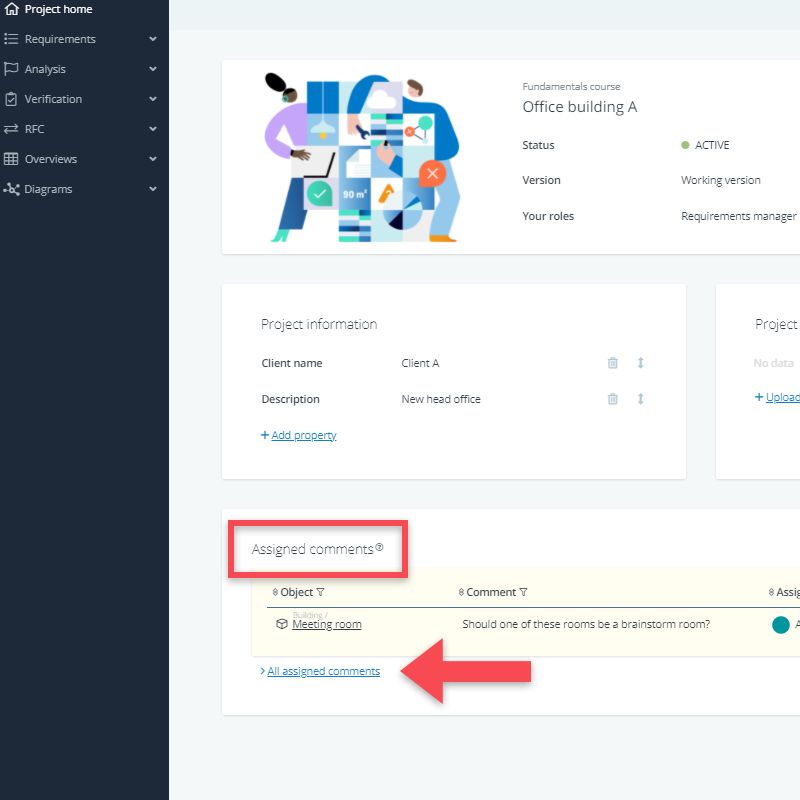
From there, you can jump to the comment overview (see below), or to the detail views of the objects where the comments have been made, where you can then deal with them.
Comments overview
An overview of all the comments in the model can be found under overviews in the navigation bar.
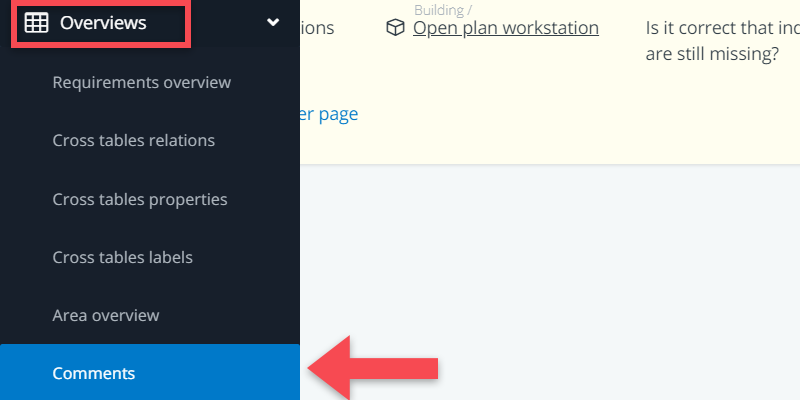
In the overview, you can use the various filters (in the column headers) to find what you are looking for.
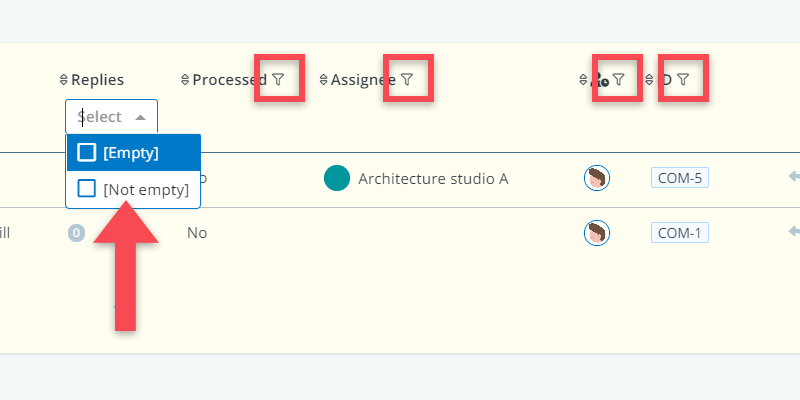
Including or excluding comments
As explained in the beginning, the comments feature is often used for internal communication. Think of a project manager asking questions to one of his or her team members about a particular requirement.
This is typically not the kind of information that you want to include when you are making a clone of a project model for other uses. The default setting therefore is that comments are not included when cloning. It is, however, possible to include comments by using the check box.
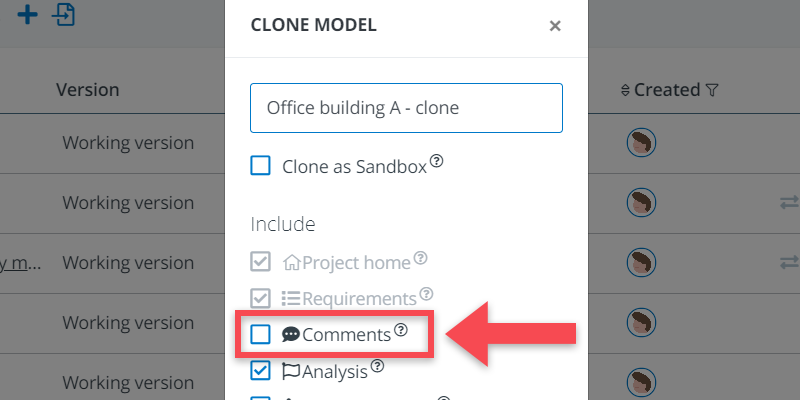
The same goes for when making a Word report. Also there, the default setting is that comments are not included.
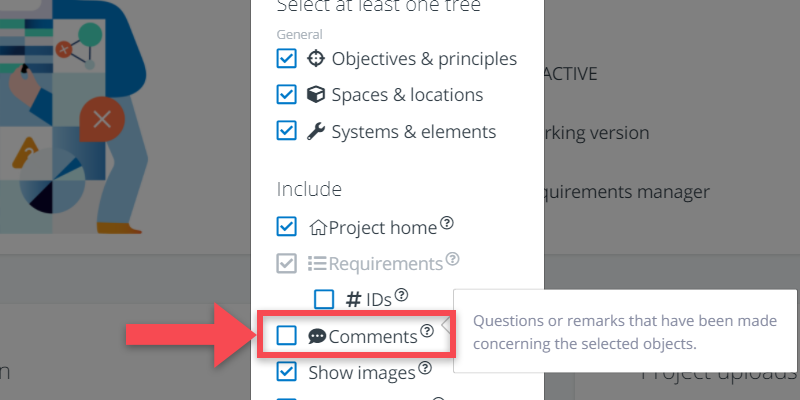
Email notifications
As user, you can choose whether you want to be notified by email when someone addressed a comment to you or has answered a comment that you have created.
You can do so under your own profile (upper right corner of the application), where you will find a button email notifications.
More info about this can be found here.
